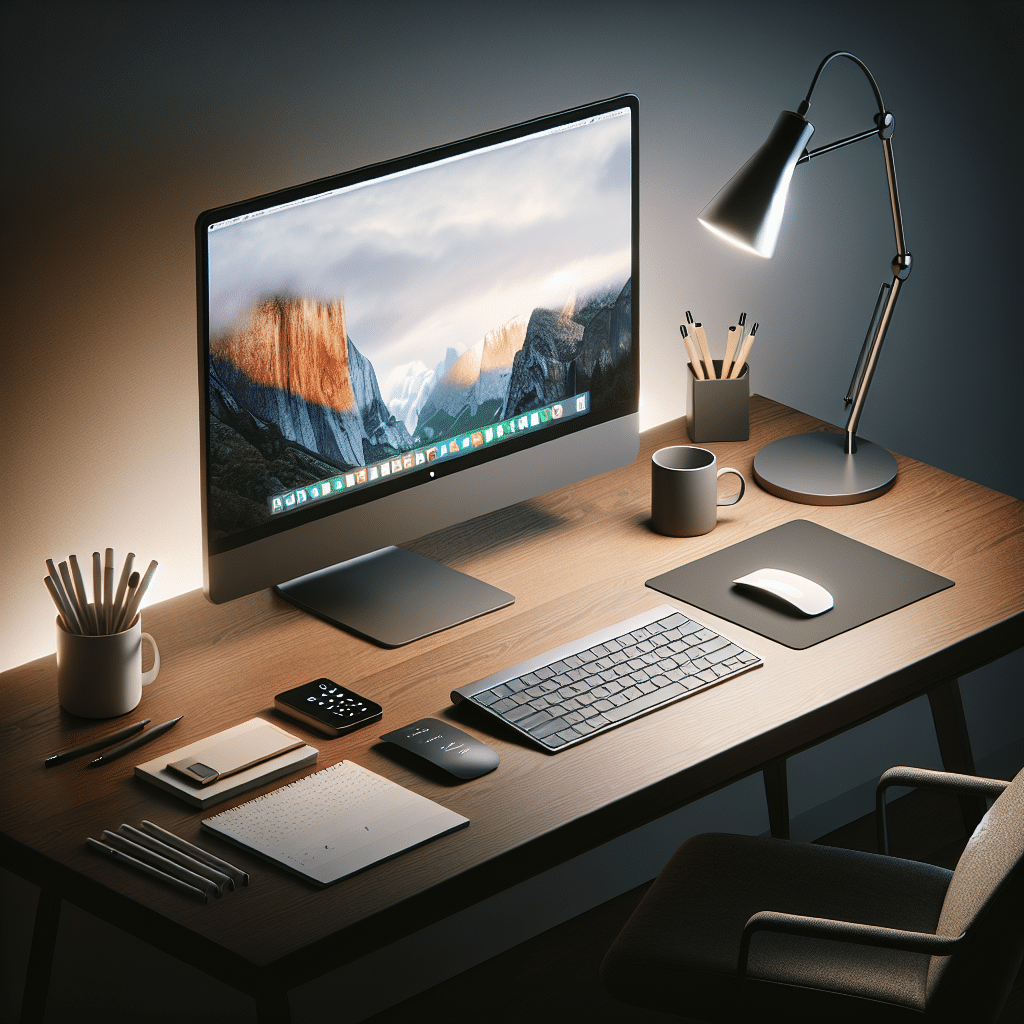Desk Lighting Tips for Better Focus
Understand the Importance of Lighting
Desk lighting is a crucial element of any workspace. It can significantly impact your productivity, focus, and overall well-being. Poor lighting may lead to eye strain, headaches, and fatigue, while effective lighting improves mood and concentration. To optimize your desk lighting, consider a combination of artificial and natural light sources.
Choose the Right Type of Bulb
-
LED Bulbs: LED light bulbs are energy-efficient and have a long lifespan. They produce bright, white light that mimics natural daylight, making them an excellent choice for desk lighting. Opt for bulbs that are labeled as “daylight” to promote alertness and focus.
-
Color Temperature: The color temperature of your bulbs can affect how you feel while working. A color temperature of 5000K to 6000K allows for a bright, energized atmosphere while a warmer 2700K to 3000K creates a cozy, relaxed environment. For optimal focus, aim for a cooler, daylight-like temperature.
Layer Your Lighting
A well-lit workspace consists of multiple light sources that work together rather than relying solely on overhead fixtures. Layering your lighting can create a balanced environment:
-
Ambient lighting provides overall illumination. Use a ceiling fixture or wall-mounted lights to ensure your workspace is adequately lit.
-
Task lighting focuses on specific areas, such as your desk or reading spot. Desk lamps with adjustable arms allow you to direct light exactly where you need it.
-
Accent lighting enriches the space and creates a mood. Use floor lamps or decorative fixtures to add visual interest without overpowering functionality.
Position Your Desk Lamp Correctly
The placement of your desk lamp can greatly influence your ability to focus:
-
Avoid Glare: Position your desk lamp to reduce glare on screens and work surfaces. A lamp positioned behind a monitor or on the opposite side of your dominant hand can help minimize reflections.
-
Height and Angle: The light source should be around 15 to 20 inches above your desk surface for optimal illumination. Adjust the angle of the lamp for maximum efficiency; a wide spread of light can enhance visibility without harsh shadows.
Utilize Natural Light
Natural light is not only aesthetically pleasing but also beneficial for your mental and emotional well-being. To maximize natural light:
-
Desk Location: Position your desk near a window if possible. North-facing windows provide consistent light throughout the day, while south-facing windows can optimize varying light conditions.
-
Reflective Surfaces: Use light-colored walls, mirrors, or reflective decor to amplify incoming natural light. This can help brighten your workspace without the need for excessive artificial lighting.
Invest in Adjustable Lighting
Adjustable lighting allows you to customize the brightness and intensity according to your current task:
-
Dimmable Lamps: These lamps enable you to adjust brightness based on the time of day or your workload. Bright light can stimulate focus during complex tasks, while softer light can be soothing during breaks or creative pursuits.
-
Smart Bulbs: Consider using smart bulbs that can be controlled via mobile apps or voice commands. These bulbs can change color temperature and brightness throughout the day to match your workflow.
Consider the Color of Your Space
The colors in your workspace can affect mood and productivity levels:
-
Light Colors: Paint your walls in light colors such as whites, soft blues, or greens to create an open and airy feel. Light colors reflect more light and can make your workspace appear larger and brighter.
-
Contrast and Pop of Color: Use darker colors for accents or furniture to create contrast with your lighting. This dynamic interplay of colors can facilitate focus and creativity.
Avoid Flickering Lights
Flickering lights can be a significant distraction and strain your eyes:
- Quality Fixtures: Invest in high-quality lighting fixtures and bulbs that provide steady, flicker-free illumination. If you notice flickering in your current setup, consider replacing the bulbs or fixtures to mitigate the issue.
Regular Maintenance of Lighting Fixtures
Ensure that your workspace remains conducive to focus through regular upkeep:
-
Clean Lamps and Shades: Dust buildup can decrease the effectiveness of your lighting. Regularly clean your lamps and shades to maintain maximum brightness.
-
Replace Burnt-Out Bulbs: Keep your lighting consistent by replacing any burnt-out bulbs immediately. Having adequate lighting is crucial for sustaining your productivity.
Create a Comfortable Setup
Incorporate ergonomic principles into your lighting strategy:
-
Furniture Arrangement: Ensure your monitor is positioned at eye level and that your desk allows for comfortable seated posture. The lighting should effectively illuminate your working area without causing strain.
-
Limit Overhead Lighting: If your overhead lights are harsh or too bright, consider using softer task lighting to supplement. This can create a balanced environment where you can focus better.
Experiment and Adjust
Lastly, don’t hesitate to experiment with your lighting arrangement:
-
Trial and Error: Try different setups and observe how they affect your productivity and focus. Adjust as necessary until you find the optimal balance.
-
Personal Preferences: Everyone has unique lighting preferences. Pay attention to what helps you feel most productive and comfortable.
By implementing these desk lighting tips, you can create an environment conducive to improved focus and productivity. An ideal workspace not only enhances your efficiency but also ensures your comfort, allowing you to perform at your best. Prioritize your lighting solutions, and enjoy the positive changes in your work habits and overall well-being.
